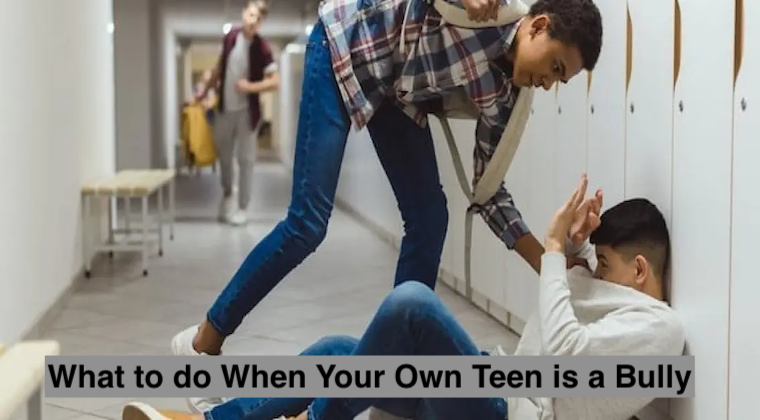Bullying is a pervasive issue that continues to affect children and teens worldwide. With the rise of technology, bullying has evolved beyond the schoolyard, infiltrating online spaces and making it harder for parents to detect. The consequences of bullying can be severe, impacting a child’s mental health, academic performance, and overall well-being. As a parent, understanding the realities of bullying is crucial to protecting your child. Here are 10 alarming facts about bullying that every parent should know.
1. Bullying is More Common Than You Think
- Fact: Approximately 20% of students report being bullied at school, and 15% experience cyberbullying.
- Why It Matters: Bullying is not an isolated issue—it’s widespread and can happen anywhere, from classrooms to social media platforms.
2. Cyberbullying is Increasing Rapidly
- Fact: Over 60% of teens have witnessed cyberbullying, and 15% have been victims themselves.
- Why It Matters: Cyberbullying can occur 24/7, making it harder for children to escape. The anonymity of the internet often emboldens bullies, and the damage can spread quickly.
For more information how it effects mental health, please read : The Long-Term Effects of Cyberbullying on Mental Health
3. Bullying Can Lead to Severe Mental Health Issues
- Fact: Victims of bullying are 2 to 9 times more likely to consider suicide than their peers.
- Why It Matters: The emotional toll of bullying can lead to depression, anxiety, and even suicidal thoughts. Early intervention is critical to preventing long-term harm.
4. Most Children Don’t Report Bullying
- Fact: Only 20-30% of bullied students report it to an adult.
- Why It Matters: Many children fear retaliation or believe that reporting bullying won’t help. Parents need to create a safe environment where children feel comfortable sharing their experiences.
5. Bullying Negatively Impacts Academic Performance
- Fact: Students who are bullied are more likely to skip school, leading to lower grades and higher dropout rates.
- Why It Matters: Bullying doesn’t just affect a child’s emotional well-being—it can also hinder their academic success and future opportunities.
6. Bystanders Can Make a Difference
- Fact: When bystanders intervene, bullying stops within 10 seconds 57% of the time.
- Why It Matters: Teaching children to stand up for others can significantly reduce bullying incidents. Bystanders have the power to create a safer environment for everyone.
7. Bullying Has Long-Term Consequences
- Fact: Adults who were bullied as children are more likely to struggle with anxiety, depression, and low self-esteem.
- Why It Matters: The effects of bullying can persist into adulthood, affecting relationships, careers, and overall quality of life.
8. Boys and Girls Experience Bullying Differently
- Fact: Boys are more likely to experience physical bullying, while girls are more likely to face verbal or relational bullying (e.g., gossip, exclusion).
- Why It Matters: Understanding these differences can help parents recognize the signs and provide targeted support.
9. LGBTQ+ Youth Are at Higher Risk
- Fact: 52% of LGBTQ+ students report being bullied at school, compared to 22% of their heterosexual peers.
- Why It Matters: Bullying based on sexual orientation or gender identity can be particularly damaging, leading to higher rates of depression and suicide.
10. Many Parents Are Unaware of Bullying
- Fact: Less than 50% of parents are aware that their child is being bullied.
- Why It Matters: Bullying often goes unnoticed because children may not report it. Parents need to be proactive in recognizing the signs and addressing the issue.
How Parents Can Address Bullying
Sharing the alarming bullying facts with your teen can help them understand the real-world consequences of their actions. Here are actionable steps parents can take to protect their children from bullying:
- Educate Yourself and Your Child
Learn about the different types of bullying and how to recognize the signs. Teach your child what bullying looks like and why it’s wrong. - Encourage Open Communication
Create a safe space for your child to share their experiences. Ask open-ended questions like, “How was your day?” or “Have you ever felt uncomfortable at school?” - Teach Assertiveness and Empathy
Help your child practice standing up for themselves and others. Encourage them to treat everyone with kindness and respect. - Monitor Online Activity
Keep an eye on your child’s social media accounts and online interactions. Use parental controls if necessary, but also educate them about online safety. - Work with Schools and Communities
If your child is being bullied, contact their school immediately. Collaborate with teachers and administrators to address the issue and ensure your child’s safety. - Seek Professional Support
If your child is struggling with the emotional effects of bullying, consider counseling or therapy. A mental health professional can help them process their feelings and build resilience.
For more information: Cyberbullying in Schools: Prevention and Intervention Strategies.
Final Thoughts
Bullying is a serious issue that affects millions of children every year. As a parent, staying informed and proactive is key to protecting your child. To truly understand the scope of the problem, it’s essential to be aware of the alarming bullying facts that highlight its prevalence and impact. By fostering open communication, teaching empathy, and working with schools, you can help create a safer environment for your child. Remember, addressing bullying requires collective effort—parents, educators, and communities must work together to combat this pervasive problem.
FAQs
Common signs include sudden mood changes, avoiding school, unexplained injuries, loss of appetite, or withdrawal from friends. Parents should gently talk to their child and observe behavior closely to catch emotional distress early.
Stay calm, avoid harsh punishment, and focus on understanding the root cause. Work with teachers or counselors to teach empathy and accountability. Early intervention helps prevent long-term behavioral issues.
Monitor online activity respectfully, teach digital boundaries, and encourage open communication. Use parental controls and report abusive behavior immediately on social platforms.
Bullying can lead to anxiety, depression, low self-esteem, and academic decline. In severe cases, it may result in long-lasting emotional trauma that affects adulthood relationships and mental health.
Consistent communication between teachers and parents, anti-bullying workshops, and creating a safe reporting system at school can make a huge difference. A united approach reinforces positive behavior both at home and in classrooms.










